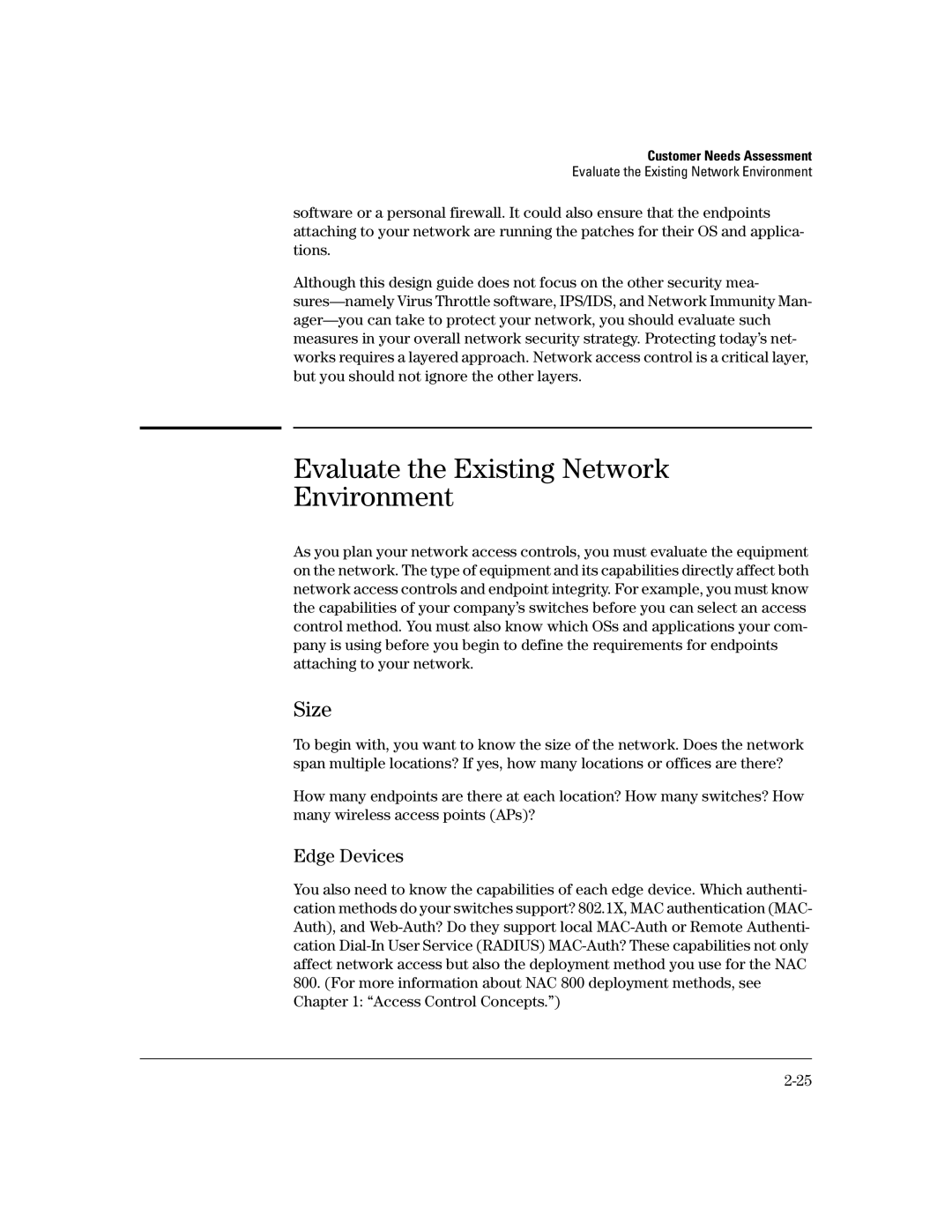
Customer Needs Assessment
Evaluate the Existing Network Environment
software or a personal firewall. It could also ensure that the endpoints attaching to your network are running the patches for their OS and applica- tions.
Although this design guide does not focus on the other security mea-
Evaluate the Existing Network
Environment
As you plan your network access controls, you must evaluate the equipment on the network. The type of equipment and its capabilities directly affect both network access controls and endpoint integrity. For example, you must know the capabilities of your company’s switches before you can select an access control method. You must also know which OSs and applications your com- pany is using before you begin to define the requirements for endpoints attaching to your network.
Size
To begin with, you want to know the size of the network. Does the network span multiple locations? If yes, how many locations or offices are there?
How many endpoints are there at each location? How many switches? How many wireless access points (APs)?
Edge Devices
You also need to know the capabilities of each edge device. Which authenti- cation methods do your switches support? 802.1X, MAC authentication (MAC- Auth), and
800.(For more information about NAC 800 deployment methods, see Chapter 1: “Access Control Concepts.”)
